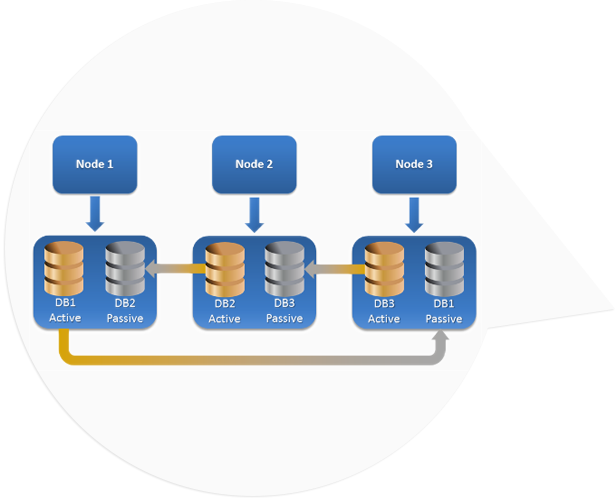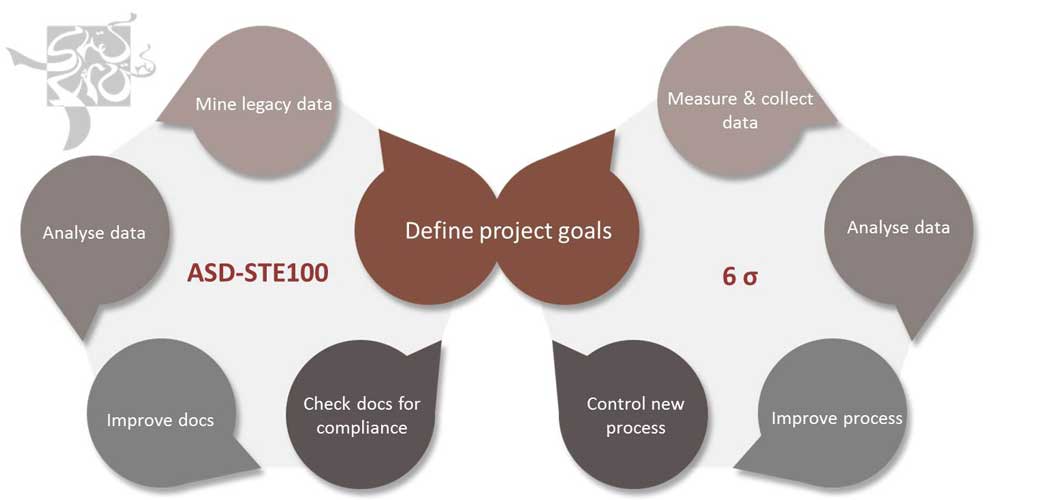Depending on your industry and requirements, it normally is a great step forward to implement DITA or S1000D to standardise on your information structure and facilitate re-use from a technical point of view. Now, learn how ASD-STE100 Simplified Technical English can help you take things to the next level, thus preparing your content for optimum re-use, readability and translatability.
Simplified Technical English (STE) deconstructed – a textual analysis
In the textual analysis that follows, we will underline unapproved words (according to the ASD-STE100 specification) in the Standard English text and then provide the corresponding approved words in STE underlined where possible.
A general misconception might be that STE rewriting is mostly a word for word replacement. However, this is clearly not the case as illustrated in the examples here:
1a) Standard English: The main idea of Exchange clusters is to provide high database availability with fast failover and no data loss.
1b) STE: Exchange clusters have high database availability with fast failover and no data loss.
Analysis: In this above sentence pair, we removed redundant words that do not add meaning to the sentence. The result is a concise, more direct sentence.
2a) Standard English: Usually, it is achieved by having one or more copies of databases or storage groups on the members of the cluster (cluster nodes).
2b) STE: There normally are one or more copies of databases or storage groups on the cluster nodes.
Analysis: ‘Achieved by’ is a passive verb form that is not approved in STE since it hides the doer of the action. By simply stating that ‘there are one or more copies of databases or storage groups ..’ already supports the first sentence.
In the ASD-STE100 specification, Issue 6, January 2013, rule 1.12, writers are advised not to use different technical names for the same thing. In Standard English, ‘members of the cluster’ was presented synonymously alongside ‘cluster nodes’. This is a clear violation of the rule 1.12 that can cause potential readability issues.
In this case, a good technical writing professional must already decide at the outset which technical term to use and then consistently apply the same term when describing the same thing.
3a) Standard English: If the cluster node hosting the active database copy or the active database copy itself fails, the other node hosting the passive copy automatically takes over the operations of the failed node and provides access to Exchange services with minimal downtime.
3b) STE: If there is a problem with the active database copy or its cluster node, a different node with a passive copy automatically replaces the unavailable node and gives access to Exchange services after a short time.
Analysis: ‘Host’ qualifies as an approved technical verb based on the nature of this text. However, in STE, only a limited group of verb tenses is allowed. The –ing form or present participle verb form is not used in STE unless it is part of a technical name. For instance: lighting, missing, servicing. From the STE example, notice that the verb ‘hosting’ is not necessary since we used the possessive determiner ‘its’ to indicate the association between the active database and the cluster node.
It is also not common to use phrasal verbs in STE as each individual verb could hold a different meaning from the phrasal verb itself. We substituted ‘takes over’ with ‘replaces’ and that adds to one less word count – a win-win. ‘Provides’ as an unapproved STE verb is replaced with ‘gives’, a verb with a more direct and clear definition.
4a) Standard English: Thus, the clusters are already serving as a disaster recovery solution themselves.
4b) STE: –
Analysis: The last sentence is a summary of all that has been described and is considered repetitive in STE.
The case for STE – concluding points
From the brief analysis provided, it is clear by now that STE when implemented properly lets you have:
- Higher documentation quality due to increased comprehensibility and readability
- Standardised, concise and meaningful content
- Reduced translation costs thanks to better source texts.
STE allows technical writers to achieve their professional goals in a timely manner with mastery of this specification in less than three training days. When correctly applied, STE writing rules help the technical author present complex information in a well-thought-out and developed style.
Copyright © 2015 Shufrans TechDocs. All rights reserved. No part of this article may be reproduced or transmitted in any form or by any means whatsoever without express written permission from the author, except in the case of brief quotations embodied in critical articles and reviews.




